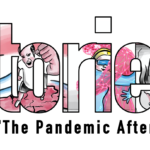Scenarios have been used in strategic management for decades. However, they rarely play a role in contemporary innovation management. To many, the scenario method is like a dinosaur, a relic from the past: too complex, too costly, and too long-term to deliver tangible outcomes for today’s fast-paced business world. Agility trumps strategy, people say, – strategic management is dead.
At SOMMERRUST, we intend to change this and revive the scenario method. Upgraded with a modern “Sprint” engine. Equipped with sophisticated co-creation features. The enhanced, faster scenario approach – we call it “Scenario Sprint” – now matches the requirements of the increasing clockspeed of innovation and is ready to jumpstart a meaningful strategic learning cycle.
Imagine you had a time machine and you could visit alternative, future worlds. Scenarios aim to represent such future worlds and make them accessible. They are created based on trends (artificial intelligence, climate change, …) and consider different outcomes of various uncertainties (changing customer preferences, political developments, …). Scenarios are the end point of a chain of linked events and developments that evolve over the course of 10, 15 or more years. The resulting scenarios can be inspiring, thought-provoking, and sometimes even sinister. Exploring these future worlds not only helps in understanding future possibilities. It also sheds light on what makes todays’ world tick. Scenarios may help you explore topics like:
- Which R&D capabilities should we invest in?
- Why will future customers decide to buy our products?
- Where in the value chain will the money be made in the future?
Or, more industry-specific examples:
- Retail: How will sustainability affect consumer choice and the value chain?
- Health care: What role will artificial intelligence (AI) play in 2035?
- Industrial goods: What are the specific threats and opportunities of digitalization?
Don’t expect definite answers, though – for these you would need a real time machine. Scenarios, however, may just offer the next best thing: If done properly, scenarios can (1) provide entirely new perspectives, (2) help making strategies and business models more robust, and (3) allow you to be proactive and shape the future rather than just watching it unfold.
Despite this attractive value proposition for those who seek to create new business models, who want to innovate and disrupt, innovators rather talk about Design Thinking, Agile or the Lean Startup nowadays – not the scenario method (a quick comparison of search terms on Google Trends demonstrates this shift over the last 15 years). So why does the scenario method have so little traction in innovation today?
Innovators rather talk about Design Thinking, Agile or the Lean Startup nowadays – not the scenario method.
The problem starts with the name: Traditionally, the scenario method was referred to as “Scenario Planning”. Yet according to the current paradigm, successful companies today are moving too fast to make grand plans. Even the slightly more modern term “Scenario Analysis”[1] is problematic in a world where experimentation is celebrated, and large companies try their best to avoid “analysis paralysis” that threatens to slow them down. And I agree they should.
This points to a deeper problem: Too often, Scenario Planning hasn’t delivered on its promises. There is always the risk, for example, that scenarios get ignored – sometimes because those tasked with creating them fail to pass on the generated knowledge to the decision makers (who are often not involved in the process). Or, the presented output is too complex and ambiguous to derive a clear course of action.[2]
Nevertheless, the conclusion shouldn’t be that sound analyses and strategies are useless altogether. Rather, one has to acknowledge that in most cases, traditional Scenario Planning is no longer the right way for creating them (or maybe never was).
A thought-out yet flexible and up-to-date strategy makes companies faster — not slower — as some surprises will no longer be surprising. It is somewhat bizarre that many innovators nowadays preach to develop products based on a deep understanding of customer needs with fast learning cycles, but don’t apply the same principles and rigor to understanding the strategic foundation of their business models. For startups that typically start with a grand vision (or delusion) that’s probably okay – at least for a while. For established companies, however, it seems dangerous to base their innovation efforts on potentially outdated mental models, or no strategic thinking at all. Like with user centricity, decision makers should get their hands dirty and immerse themselves into strategic issues.[3]
The big question is then: How can a company create useful scenarios fast, without spending millions of Euros on their development?
For the traditional “huge project” version, I recommend reading Shell’s 2008 “Scenarios: An Explorer’s Guide”[4]. In contrast, we propose a Sprint approach in the spirit of Jake Knapp’s Design Sprint methodology that can take as little as one week. This is how a “Scenario Sprint” works:
- Day 1: Define the Scope: clarify the strategic questions that you want to address and define the scenario scope (timeframe, geography, key topics to consider, etc.).
- Day 2: Analyze Trends: from a long list of trends, select the most relevant ones and create snapshots for further discussions. Also identify important uncertainties.
- Day 3: Construct Scenarios: collect scenario themes, refine and combine them in order to generate draft scenarios. Conduct quality checks to arrive at a set of ca. three or four Learning Scenarios[5]
- Day 4: Capture the Story: retrace how each scenario could have unfolded in a plausible way, fill logical gaps and develop a catchy way to present your Learning Scenarios.
- Day 5: Share & Explore: Involve decision makers and stakeholders by creating an “exhibition from the future”: prototype objects, images or even performances that represent different aspects of the future worlds. Explore first potential impacts of the different scenarios.
A 5-day Scenario Sprint is so fast that it allows using scenarios much more frequently – and not just for the biggest, company-wide strategic questions. This opens up an entire new field of application within divisions or even single departments.
A 5-day Scenario Sprint is so fast that it allows using scenarios much more frequently…
Once Learning Scenarios are available, you can create further value by:
- identifying scenario-specific threats and opportunities for your organization – given its capabilities, competitive positioning and unique risk factors
- innovating based on the rich inspirations that your scenarios (hopefully) provide
- starting a constructive dialogue with internal and external stakeholders on critical issues concerning the future
For a successful Scenario Sprint, senior decision makers should be part of the goal setting for the scenario exercise and definitely participate on day 5. This way, they can explore the scenarios themselves – a much more effective way to create understanding than through presentations alone (even if they are well done). There are three further prerequisites to run a Scenario Sprint over just five days: (1) the scenario team (ca. 6-10 people) is available for the whole time, (2) the scenario team covers all domains of core interest — both in terms of expertise and (access to) decision makers, and (3) mental models of the team are reasonably similar at the outset.
The last prerequisite probably needs some explanation: Mental models would usually be similar if team members named the same (or strongly overlapping) key industry trends and uncertainties when asked independently of each other. If that is not the case, a scenario exercise will be even more beneficial as there seems to be major strategic disagreement within the organization. However, one week will be too short in this case to resolve potential conflicts about what is important. Moreover, aligning mental models takes some time. In such a situation, stretching the scenario exercise over the course of a few more weeks will probably be more effective (and more pleasant for everyone involved).
If you made it until this point of the article and are now reading this sentence, chances are that you are still not entirely sure how and if the proposed scenario approach would really work for your organization. That is normal, unfortunately. As we had to discover, the experience of a Scenario Analysis is incredibly hard to explain. I imagine it must have been similar for the first airlines to convince people that it’s a good idea to board their aircrafts. Therefore, we have developed a simple (and fun) 1-hour scenario exercise. Like a flight simulator can be used to train flying an airplane, our format allows teams to try out thinking in scenarios within just one hour. The training process is the same in principle but greatly compressed (an actual example of such an event is featured in this post).
While Design Thinking or the Lean Startup address customer needs and product-market fit, scenario thinking facilitates strategy-environment-fit.
It’s a pity that scenarios have come a bit out of fashion as of late. We hope to reverse this trend with our method upgrade to fit contemporary requirements, as well as with our 1-hour scenario exercise to overcome initial reservations. Scenario Sprints complement iterative learning approaches as propagated e.g. by Design Thinking or the Lean Startup. The difference is that while the former address customer needs and product-market fit, scenario thinking facilitates strategy-environment-fit. With an accelerating pace of change, it seems irrational to limit fast learning to products and users, and to neglect the bigger strategic picture.
… Imagine you had a time machine – what would you like to know about the future?
Endnotes:
- Until we have found a better name, I will use the term “Scenario Analysis” for the general concept.
- More generally, the Strategic Planning school of management has not fulfilled expectations as Henry Mintzberg argues in his HBR article from 1994: “The Fall and Rise of Strategic Planning”. For a discussion of Scenario Planning in the context of the Strategic Planning school, see Mintzberg, H; Ahlstrand, B.W. & Lampel, J. (2009): “Strategy Safari. Your Complete Guide Through the Wilds of Strategic Management. Harlow, UK: Pearson Education Limited, 2nd edition, p. 61ff. To learn more about the historic challenges around using the results from scenarios and approaches to facilitate learning, I recommend reading Arie de Geus’ 1988 HBR article “Planning as Learning” about his experiences at Shell.
Bild: Symbolbild © SOMMERRUST 2019



